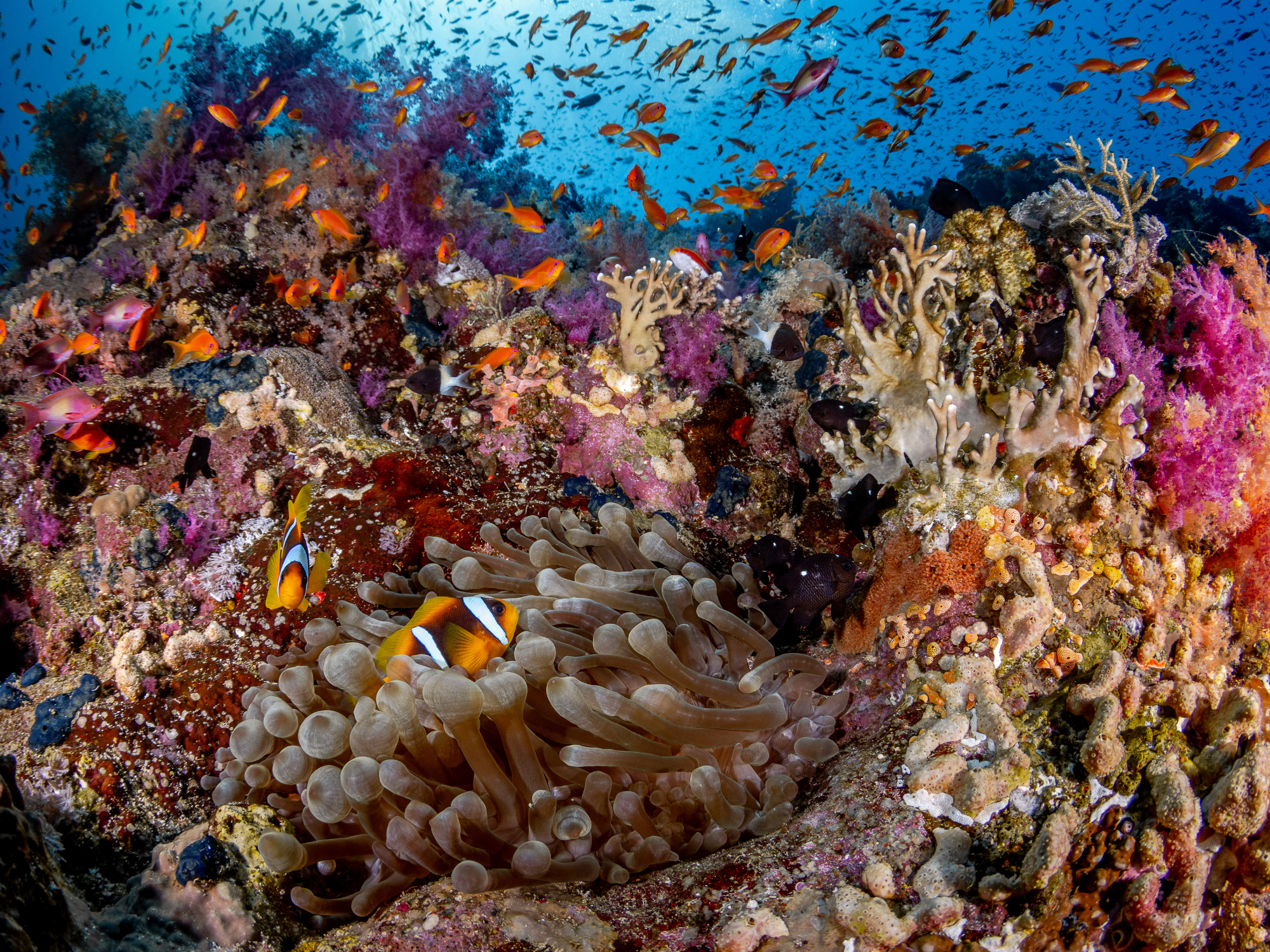Kate, a 16-year-old environmental advocate, shares our deep love for the ocean and wants to save its magical underwater ecosystems. Since watching “Finding Nemo,” she has appreciated the beauty and value of coral reefs, and hopes to inspire others to save them. Motivated to act, Kate wrote us a letter about why it’s important to protect the places we love:
Corals and Us
By: Kate, Age 16
We all depend on coral reefs. To most, this may seem like an exaggeration, but coral reefs are vital to the livelihoods of more than 500 million people for food, income, and protection from storms and waves. They support approximately six million fishers and are important culturally to many indigenous people.
What Threatens Coral Reefs?
While you may assume that coral reefs are thriving as millions of people depend on and care for them, in reality, they are threatened by a combination of stressors. In fact, about 75% of the world’s coral reefs are threatened.
There are many global threats to corals such as coral bleaching, rising sea levels, and ocean acidification. Primarily, the increasing amount of carbon dioxide (CO2) in the atmosphere has caused coral bleaching. When water temperatures rise too high, corals expel their zooxanthellae, tiny algae that live inside coral tissue and act as a food source. Corals can survive this event, but they become more prone to disease and can die if bleaching persists. Unfortunately, coral bleaching is increasing as corals are exposed to high levels of carbon dioxide.
In addition, many locations do not treat their wastewater, which can increase algal growth and nutrient pollution.
Ocean acidification also plays a major factor in threatening coral reefs. Oceans absorb carbon dioxide, gradually making the ocean more acidic. Reef-building corals (hard corals) are negatively affected, altering their ability to grow their skeleton and make the foundation for coral reefs. This makes corals more prone to disease and destruction.
These are only some of the threats to coral reefs. Other direct threats to coral reefs include unsustainable fishing, habitat destruction, and land-based pollution.
How We Can Protect Coral Reefs
Even small actions can make an impact. Here are some ways we protect coral reefs:
1. Use reef-friendly sunscreen
2. Reduce your energy consumption: turn off lights when leaving the house or use public transportation
3. Dive responsibly: admire reefs from a distance and avoid touching them
4. Eat sustainable seafood
5. Recycle and dispose of trash correctly
6. Subscribe to the CORAL newsletter to learn about their conservation efforts and what you can do to help
7. Support coral-friendly businesses
8. Help spread the word about coral reefs by sharing CORAL’s content on social media
Another important thing each of us can do to help coral reefs is to educate others on the importance of coral reefs to the ocean and to us. We can inspire others to develop a love and care for the ocean and coral reefs.
In the words of Jacques Cousteau: “We protect what we love.” If people begin to love and appreciate coral reefs, they may be encouraged to take small steps in conserving them!
Thanks for sharing your thoughts, Kate! We’d love to continue hearing from other youth activists and coral reef supporters. Help support our mission by sending in your own open letter.
